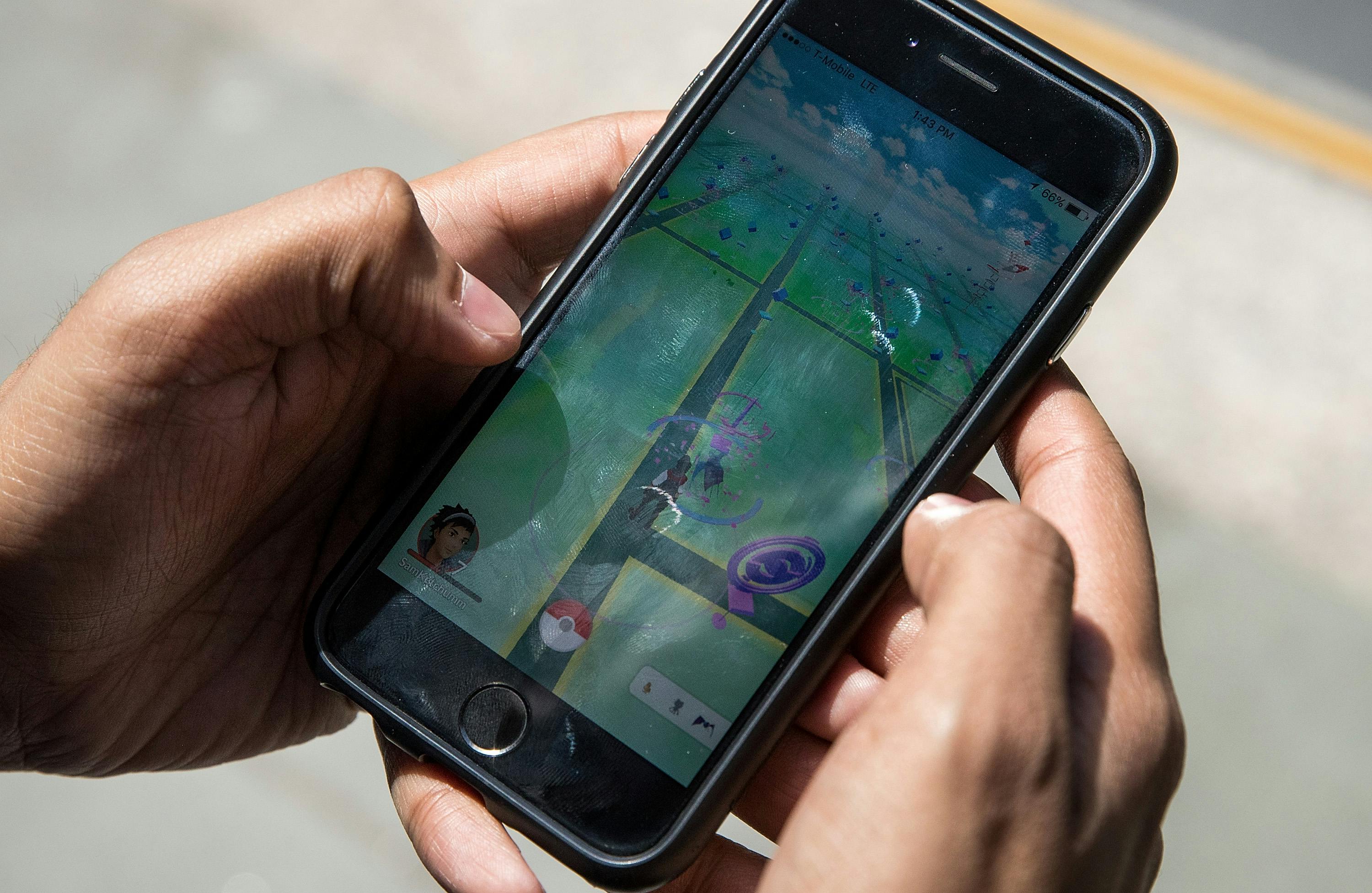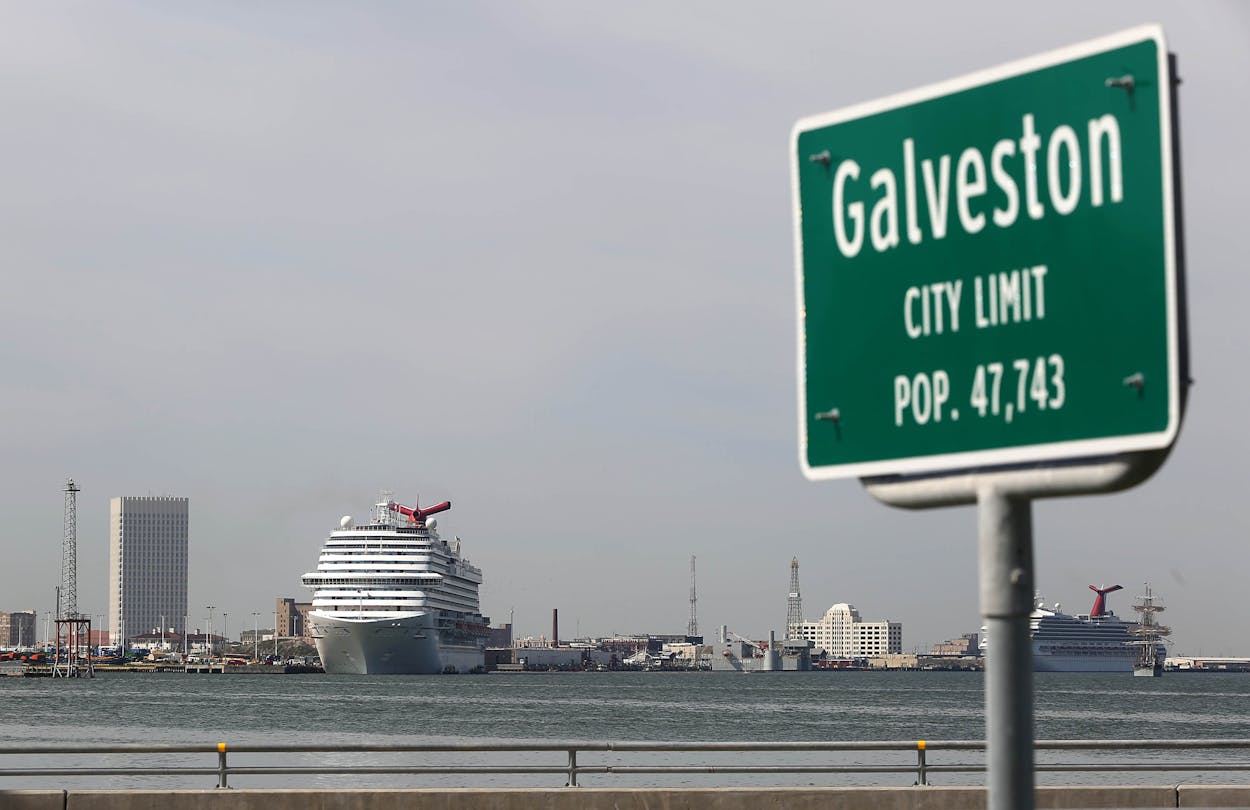Amid intense anticipation from its hardcore fans, generation II of Pokémon Go came out last month, breathing new life into a game that has cooled from “Gangnam Style” mania into something more like a cult, and a fractious one at that. On social media sites dedicated to the game, grumbling was rife that producers Niantic had to do something drastic, and soon, if they wanted to keep the remainder of the game’s one-time 45,000,000 users intrigued. And so, three days after Valentine’s Day, the company delivered its most thorough overhaul to date.
Thanks to my twelve-year-old daughter, I’ve become an unlikely Pokémon Go obsessive—a 46-year-old man with no prior relationship to these “pocket monsters” whatsoever. And finding myself at one of the Lone Star State’s Poké-hunting hotspots—the Galveston Seawall—a week after the upgrade, I decided to take the temperature of my fellow enthusiasts’ ardor for the game, which, I guess, bears some explaining.
To be brief, the goal is to catch as many of the now 248 breeds of pocket monsters as you can by hurling little beach balls type things at them with varying degrees of efficacy. Your resources are decidedly not unlimited—you must harvest these “pokéballs” at various points of historical interest wherever you might be. These oases are known as “Pokéstops,” and generally speaking, the thicker the number of Pokéstops, the happier the hunting for Pokémon.
Little dexterity is required—once you get the knack for tossing a Pokéball with a thumb-flick, you’re set—but the game does require some thought about marshaling resources and strategy, for reasons too lengthy to explain here. And there’s the exercise. The game designers intentionally crafted Pokémon Go to reward pedestrians and cyclists over those who indulge in more passive forms of transport. There is an almost subterranean exercise evangelism to the game, one that Texans, as we shall see, seem to do their utmost to flout.
Anyway, there I was at a Sheraton on the Seawall, right between Murdoch’s pier souvenir shop and Tilman Fertitta’s newish Pleasure Pier, one of the happiest Poké-hunting grounds in Texas, right after generation II had dropped. I assumed it would be a madhouse of both real-life hunters and the virtual hunted. I hoped to interview a few fellow devotees, both to see what they thought of the new iteration and if the company had done enough to keep the game alive.
It didn’t happen that way. The Poké-hunting wasn’t much better than average, nor were the hunters thick on the ground, even by night. And by day, it was downright pitiful. I could tell there were a couple around (again, for reasons too complicated to go into here), but they were car-hunting, not walking around with their phones, the way God and Niantic intended it.
So I left the Seawall and went to a couple of other famed coastal Poké-hunting grounds. The first was Seawolf Park, where I’d read that such fabled Pokémon as the Lapras (a sort of tortoise-like dinosaur) and the Dratini (a baby dragon) could be found in relative abundance. I found none of either, but there was a large number of Jynxes: a humanoid dancing creature that has landed the game in hot water over blackface connotations, but has nevertheless endured. Nor did I find any fellow devotees—though I did find a park employee, concealed in a forgotten corner of the hurricane-ravaged park, parked on her golf cart and devouring a paperback novel, enjoying an antiquated form of escape.
There were also quite a few people casting lines into Galveston Bay, which set me to thinking. The sort of augmented reality Pokémon Go has concocted—strange creatures all around you, just waiting to be snared and reeled in (or not: some of them escape at the last moment, becoming “the ones that got away” every fisherman has told you about)—has always existed, so long as you had access to a fishing rod and a coastline.

Just as you might never know what you might reel in when you go Poké-hunting, that goes quintuple when you toss some hooked bait in the ocean. You are trying to bring something back from a strange world, and in the case of fishing, something you can actually eat. My afternoon took a turn toward a shame-spiral with that realization.
There are less than 250 Pokemon for the taking in Niantic’s augmented reality ether, but there are thousands and thousands of seagoing species you might snag right there from the Gulf shoreline, ranging from mullet to shark, gafftop to sea turtle, flounder to redfish. Pokémon Go tries, and to some degree succeeds, in bring the thrill of saltwater fishing to dry land, and such is much of its appeal, even if it is all virtual, but dang me if I wasn’t cursing myself for not owning a rod and a fishing license.
So those were my thoughts as I sped from Seawolf Park to the Texas City Dike, another renowned Poké-hunting spot/fishing ground. I’d heard that the Dike—a 5.3 mile pier jutting east from the mainland into Galveston Bay—was another virtual arcadia, home to many a Dratini and the occasional aforementioned Lapras, one of the few first generation monsters to have eluded my dragnet. It remained fertile hunting grounds for Pokémon (I caught a ton of trashy common monsters on my slow drive out), but not for hunting and interviewing my fellow hunters, the actual task I was assigned. (And I didn’t get a Lapras or Dratini either.)
So, in the absence of Poké-hunters, I started talking to fishermen: people who lived my virtual iPhone-based reality in terms of catch, albeit with more physicality and protein on the table. While I spent much of my time pretending to reel in “Magikarp” (fake carp), “Goldeen” (fake goldfish), “Shellders” (fake oysters), “Tentacools” (fake squid), and Krabbys, they were hauling actual fish from an actual ocean.
But weren’t some of my virtual feats equal to those of their reality? I mean, even as I was still at Seawolf Park, watching a fisherman reel in a tiny sand trout, I was landing a mighty “Mantine” (Pokemon Go’s giant manta ray-like creature.) I could imagine at that moment that my enormous triumph compared favorably to that angler’s near-fruitless labor to reel in a wee tiny baitfish.
For a second. I was quickly disabused of that notion as I tried to compare notes with a few fishermen at the breezy T-head of a wooden pier at the very tip of the Texas City Dike. “Hey y’all, I am a reporter with Texas Monthly and I was just wondering if any of y’all played Pokémon Go,” I asked one group of bait-casters.
After the hails of derisive laughter died down, one member of the group told me “We don’t catch Pokémon. We catch fish. I haven’t caught a Pokémon since I was eight years old.” So, nope. They declined to be named other than as “People Who Do Not Play Pokémon Go.”
I headed landward along the pier and came across another group. This one had landed a good-sized redfish and nice fat black drum, both of which were still swimming in the bay, albeit tethered to a line. “I am ignorant about fishing,” I told one of the fishermen. “Why are they still down there in the water?”
“To keep ‘em nice and fresh,’ he said.
Yeah, like I keep my Pokémon safe in my phone until they are ready to evolved into even better versions of themselves! Okay, I didn’t think of that until a day or so later, and would not dare to say even had I done so there and then. And neither did I get to enjoy a nice fish dinner, like he did. Or at least not one I did not pay for at Hillman’s Seafood Market on the way home.
At any rate, I did talk to a nice family (whose name was blown right out of my tape recorded by the gulf breezes) about fishing v. Pokémon harvesting, and even they were as eager to snag a Magikarp as a redfish, so I didn’t feel like a total dork. Still, I resolved to try to get out there with a fishing pole—the original Pokémon Go app—as soon as I could.







